
For this week’s Class Struggle newsletter, I had a conversation with Charles Smith, co-editor of Labour/Le Travail: Journal of Canadian Labour Studies, about the right to strike, its history and politics, how governments have eroded this important right, and what workers might do about it.
Charles is an associate professor in the Department of Political Studies at St. Thomas More College, University of Saskatchewan and the co-author of Unions in Court: Organized Labour and the Charter of Rights and Freedoms.
Adam King: I think it would be helpful for Passage readers if we first get a sense of why the right to strike is so important. What makes “the strike” so integral to the collective bargaining process?
Charles Smith: In a certain sense, workers have always had the “right” to strike. The catch was that they had to organize enough collective power to pull strikes off.
After the Second World War, there was a whole new legal regime that was constructed, partly in response to workers who were quite militantly striking against the wind down of the war economy. Workers were nervous about what happened after the end of [the First World War] happening again: a recession after a giveaway to the private sector during the war.
Up until the 1940s, employers could simply refuse to recognize a union, even if the majority of workers wanted it. So workers were quite aggressive in their efforts to make unions permanent by gaining a path to employer recognition, collective bargaining rights and, importantly, the ability to collectively withdraw their labour — to strike.
Canada developed a model that met unions halfway and sat in the middle between employers and unions. This was classically “Canadian.” It left employers with all kinds of tools to limit the power of strikes, like stockpiling materials and hiring “scabs.”
This model of “legality” gives unions formal recognition but takes off the table the right to strike for recognition, which instead becomes a matter of following a legal certification procedure. No “political strikes” are allowed. Strikes become permissible only over issues of collective bargaining, and then only after collective bargaining breaks down and a series of other legal hurdles are cleared. You can’t strike during a collective agreement. You can’t strike during bargaining. You can’t strike until bargaining is declared at an impasse, and then there’s an additional “cooling down” period. Then mediation or conciliation are imposed. All of these delay a strike.
Even with all these hurdles in place, employers and governments are still terrified of workers’ ability to strike. But without the ability to strike, free collective bargaining is useless. If there’s no threat to production or service provision — no threat of a labour withdrawal — employers can simply drag their feet and refuse to meet workers’ demands.
We see this recently where more unions either let collective bargaining agreements (CBAs) expire or are bargaining for longer periods of time to get a contract. The reason is that the ability to strike is so constrained.
AK: In many ways, unions are still living with this same postwar legal framework, with the so-called “postwar compromise” between capital and labour. What were workers able to gain under this arrangement?
CS: From the beginning, the framework was centred where unions were strongest, particularly in heavy manufacturing such as auto, steel and rubber, forestry, mining, and docks. These were traditionally male-dominated industries and workplaces.
It’s bizarre when you compare this to industrial relations models around the world, especially in Europe. Canadian workers have to organize individual job sites, which becomes challenging with small workplaces and chain stores such as in retail or fast food. Even in auto, unions have been able to organize General Motors, Ford and Chrysler, but not Toyota or Honda. So this lack of a sector-based system is unique.
In the 1960s, the model took hold in the public sector. That’s when we saw huge transformations in the labour movement. More women work in the public sector so unions were changed as a result.
You’re right, we largely still live with the same model, with some minor tweaks here and there. For example, Quebec and British Columbia have anti-scab legislation. Some jurisdictions have first contract arbitration, wherein the state can impose a CBA if the employer is incalcitrant. But for the most part, the model is the same.
By about the mid-1980s, around 40 per cent of workers were unionized under this model. Today, that number has fallen to around 31 per cent. The real crisis is in the private sector, where union density is around 16 per cent. The weaknesses of the postwar model are glaring here.
This places unions in a crisis. You see many unions in the private sector merging to survive. As a result, we see the end of some really important traditions of militancy, such as the International Woodworkers of America in B.C.
AK: Leo Panitch and Donald Swartz, in their book From Consent to Coercion: The Assault on Trade Union Freedoms, detail how “free collective bargaining” has been undermined in the neoliberal period, and speak of an era of “permanent exceptionalism” wherein governments limit the right to strike on an ad-hoc basis. How did this happen and why?
CS: Panitch and Swartz’s book was originally published in 1985, but what they observed coming out of the late-1970s and early ‘80s is still extremely relevant. Unlike in other jurisdictions where right-wing governments were gutting labour laws and attacking unions, the Canadian state and its provinces took a different approach. In some cases there were direct attacks — like when Jean-Claude Parrot of the Canadian Union of Postal Workers (CUPW) was imprisoned for refusing to order his members back to work. But for the most part, Canadian governments engaged in the “permanent exceptionalism” of limiting the right to strike through periodic back-to-work legislation.
Governments in Canada continue to use the same script. It’s the same story from the 1950 national rail strike all the way up to the most recent example of the Liberals legislating the Montreal port workers back. Governments say, “We support workers’ rights to collective bargaining and to strike but the public is being put in harm’s way by this or that strike and so we have to intervene to protect the ‘public interest.’”
Panitch and Swartz realized that governments could get away with paying lip service to the legal framework of collective bargaining while using an ad-hoc legislative hammer to undermine it. Governments do this whenever a strike is politically inconvenient or poses a risk to some “public interest,” which is sometimes private sector capital. Although, in most instances, these attacks are directed at public sector workers.
At the Federal level — especially since Stephen Harper — even the federal private sector regulators are willing to bring in draconian legislation to end strikes. We’ve seen this in rail, on the docks and in air travel.
The issues that these workers are striking over end up going unresolved. They turn into a smouldering fire that is never put out. Even when the issues are health and safety related, there’s no resolution. Harper legislated rail workers back within a year of the Lac-Mégantic disaster.
Overall, back-to-legislation has been part of imposing neoliberalism on workers and weakening their collective ability to use the legal tools they still have, especially the right to strike.
AK: On the other hand, over the past decade or so, we’ve seen a set of cases reach the Supreme Court of Canada that enshrine collective bargaining and striking as Charter protected rights. What difference have these cases made and how do we reconcile the continued use of back-to-work legislation with the supposed “Charter protection” of these rights?
CS: When unions first tried to get these rights into the Charter in the 1980s, they failed miserably. By the mid-2000s and into the 2010s, the Supreme Court of Canada reversed its jurisprudence on this. Larry Savage and I try to grapple with what this means in our book, Unions in Court.
On the one hand, it’s important that the Court recognized collective bargaining and the right to strike as rights that Canadian workers should enjoy — those able to unionize at least. On the other hand, because unions were getting the crap kicked out of them in the 1990s, they started putting all these resources into legal challenges as a way to do something. Even though we were critical of that, it’s understandable.
But even with the 2007 decision on the right to collectively bargain, and the 2015 decision on the right to strike, governments continue to use the “legislative hammer” to end strikes. When such government action is deemed unconstitutional by the courts, it’s usually several years later, by which point, the damage is done.
It leaves people wondering if these are paper rights with no real substance.
AK: When unions do engage in a Charter challenge, what sorts of remedies do they receive?
CS: They vary. As one example, teachers in B.C. fought tooth and nail against the Campbell and Clark provincial Liberal Governments. Teachers argued in court that governments had limited collective bargaining rights going back to 2002. When the remedy came in 2016, the government was forced to act as though they hadn’t prevented bargaining over class sizes. The state had to spend nearly $300 million extra per year and hire many additional teachers to make up for this. It was a not insignificant remedy.
But, it took nearly 20 years, and it isn’t typical. In other instances, the remedy might simply be a slap on the wrist. It’s hit and miss. Governments can therefore risk using back-to-work legislation in the here and now and then worry about any potential legal remedy down the road. The “political crisis” of a strike by that point is long over.
The difficult question is then: Should unions defy back-to-work legislation? Of course, unions are entities with budgets whose members pay dues, and fines for defying legislation are very heavy. It would take significant bravery from a union leader to say, “We’re not obeying this legislation.”
AK: When back-to-work legislation comes down, you invariably hear calls to defy it. But these often sound to me like calls for a general strike. They sound nice but don’t really take into account the years of organizing that would be necessary to make it happen and protect unions from the consequences.
CS: It’s true. But this is where unions might need to be creative. After CUPW was legislated back in 2018, workers and other people not employed by Canada Post tried to organize supportive picket lines outside of post offices and other facilities. These people weren’t tied to the union or the employer, so they couldn’t be fined. People were brave and dedicated and it was great.
However, it was difficult to sustain because they didn’t have the resources of the union. There were also additional legal barriers that made this hard to keep up in the long term.
AK: With those sort of recent uses of back-to-work legislation, are we still living with “permanent exceptionalism” or is something new going on?
CS: I think it’s become something permanent. Now, not every union that goes on strike will be legislated back to work. It sounds cliché, but it comes down to the balance of class forces at the time.
Unifor Local 594 was on strike at the Co-op Refinery in Regina last year. It was a bitter strike, there was tussling at the gates and the employer used picket injunctions. The provincial government chose to stay out of it, I think, because it was clear the employer was winning the air war in the media. Plus, the refinery was able to keep the plant running for the most part during the strike. The state had no problem letting the strike drag on because there was no real threat to oil production in Saskatchewan. Had there been a threat, I’m convinced the government would have intervened.
What’s clear is that strikes, especially in the public sector, will be legislated back whenever they are politically inconvenient. Look at the recent Port of Montreal strike. If you listen to the Minister of Labour’s speech that day, it’s nonsensical. They clearly hung port workers out to dry. Their right to strike was sacrificed to maintain corporate profitability. There was no genuine public interest concern. They even had the audacity to table the legislation the day before the Workers’ Day of Mourning. It’s incredible. ‘We respect workers’ rights but you have to go back to work in a workplace being made unsafe by the very speed-up you’re striking against.’ The contradictions are so rich you can see them dripping during the speech.
There’s no distinction between Liberals and Conservatives on this either. Liberals might speak a little nicer, but at the end of the day, when it comes to class struggle, they’re no different from Conservatives. I’m not entirely convinced the NDP would be all that different. They do have alliances with unions, but NDP provincial governments have used back-to-work legislation also.
The state intervenes to protect either itself or private property. Notice that we never see governments use back-to-work legislation to end an employer-instigated lockout or to improve health and safety. Government is there to ensure that employers can appropriate labour power and make a profit. It’s a capitalist state working as a capitalist state does.
AK: What do you see as possible union strategies to deal with what is now a restricted right to strike?
CS: I wish I had a silver bullet. Some have suggested that unions need “flying squads” of people not tied to the employer to aid strikes and build alliances or that retirees could play a bigger role.
I think this is also an area where labour federations could play a much bigger and better role. If you think about the money that union members give to the Canadian Labour Congress and to the provincial federations, maybe there’s a way to create funds that could be used to assist strike efforts. Maybe they could pay strike funds to other workers not directly tied to the employer being struck to reduce the legal vulnerability of those on strike.
But divorcing strikes from the employment relationship is something to think thoroughly about. It’s not a perfect solution. For example, would employed workers have to cross these picket lines? In that case, how would you keep the strike going?
Yet, there’s no question that unions are too weak right now to challenge back-to-work legislation in the ways they did in the 1970s. Even in 1999, when the nurses in Saskatchewan refused to follow back-to-work legislation, think about the circumstances. The NDP was in power. Nurses had been underpaid for about a decade and people were concerned about the quality of health care in the province. The public then sided quite decisively with the nurses. Not all public servants have that level of support. The nurses defied the legislation successfully and the government got rid of the fines. It was a great victory.
But are all unions going to be able to depend on a government backing down and reversing the fines? Most will not be able to depend on that. There has to be a significant threat from the broader working class. That’s when you could bring real pressure on a government.
There might be certain workers who could strategically defy back-to-work legislation in the post-COVID economy. Nurses or maybe teachers because of all that they’ve done for people during the pandemic. But could Air Canada workers pull it off? Maybe not.
Public support is tricky too. There’s always an air war and capitalists have money to fight it. They’re going to go after the “greedy unions.”
I have sympathy with unions who are reluctant to defy this stuff. But at some point, we have to ask when it’s enough already. Unions have no power in a relationship where the right to strike is limited like this.


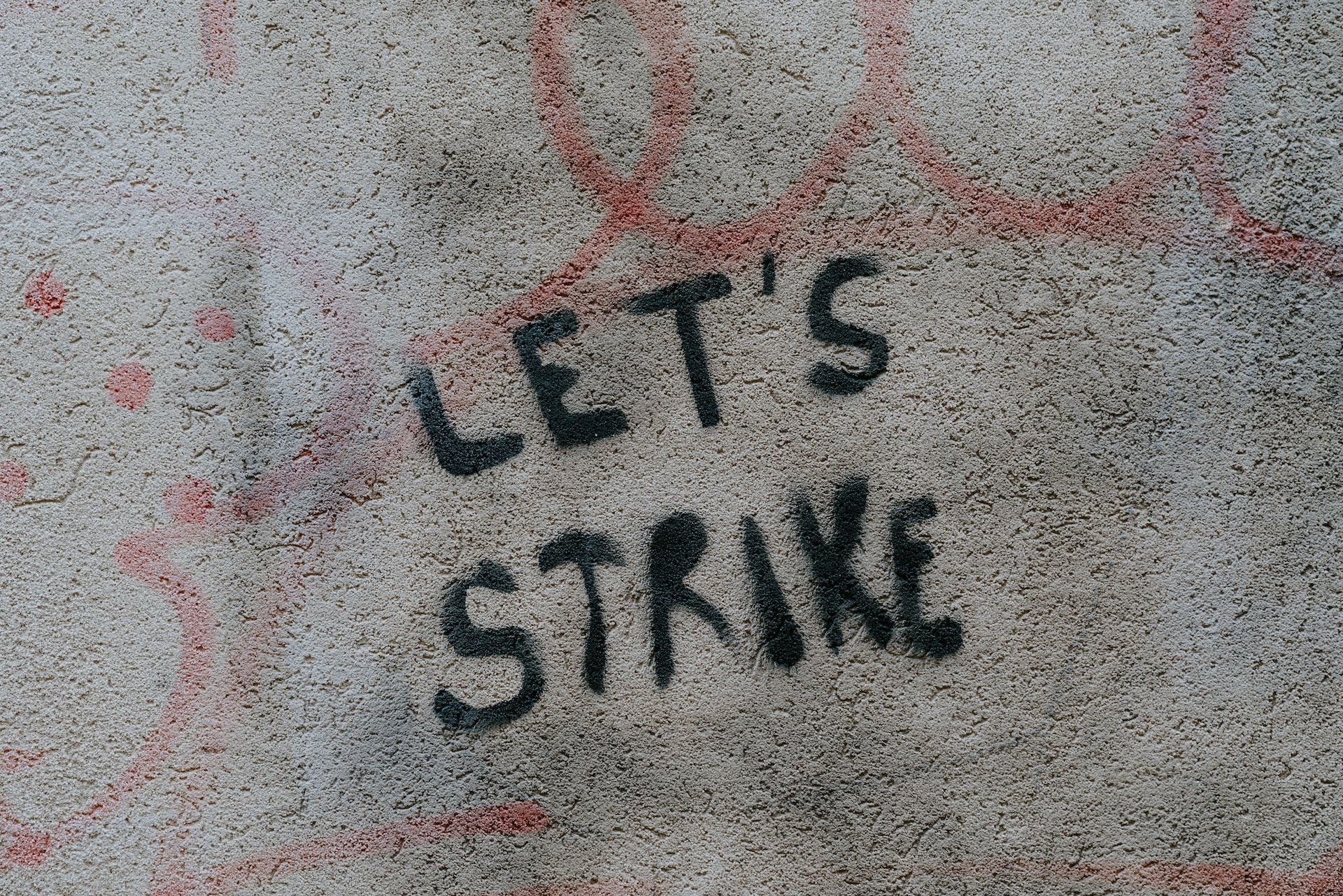
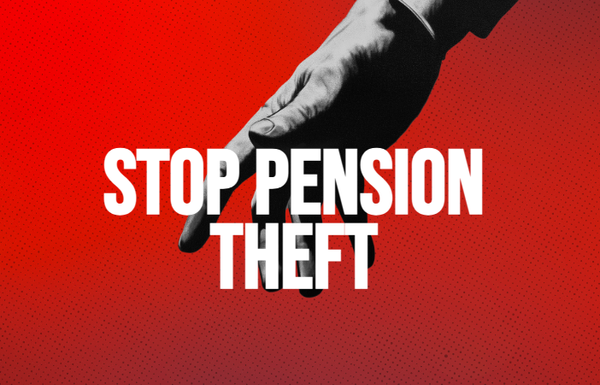
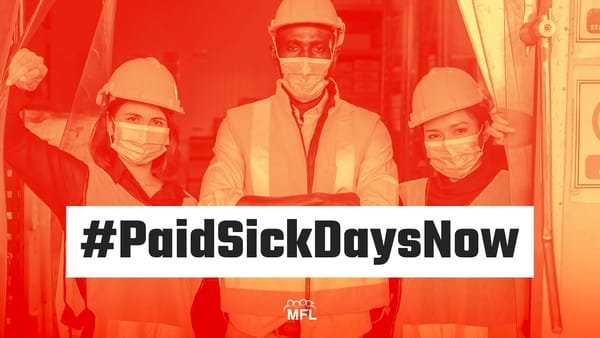
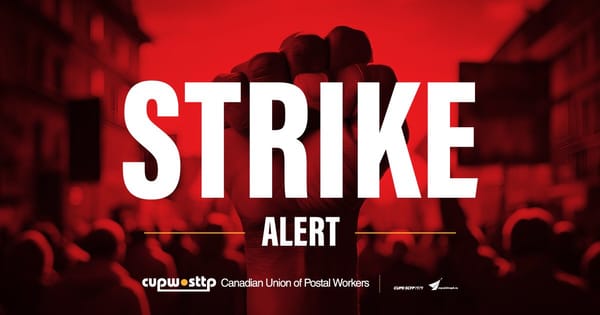
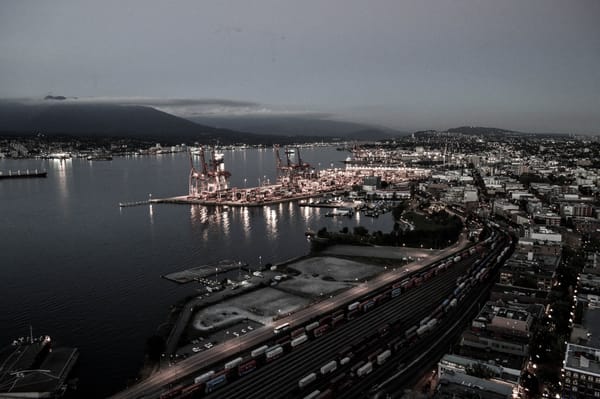
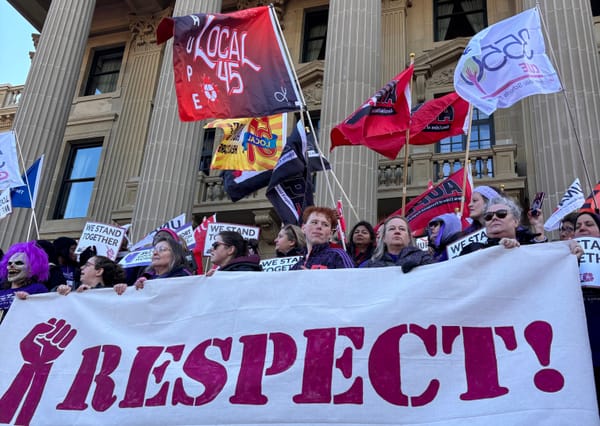
Member discussion